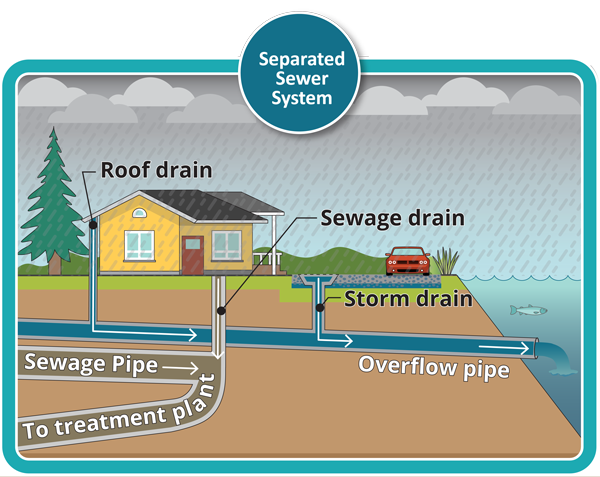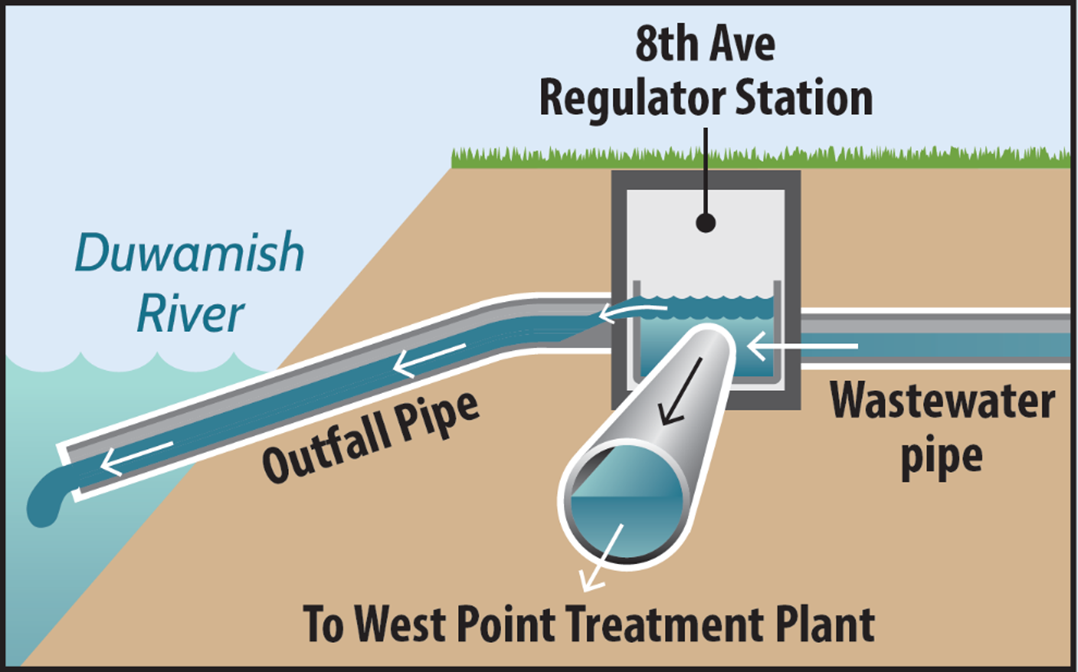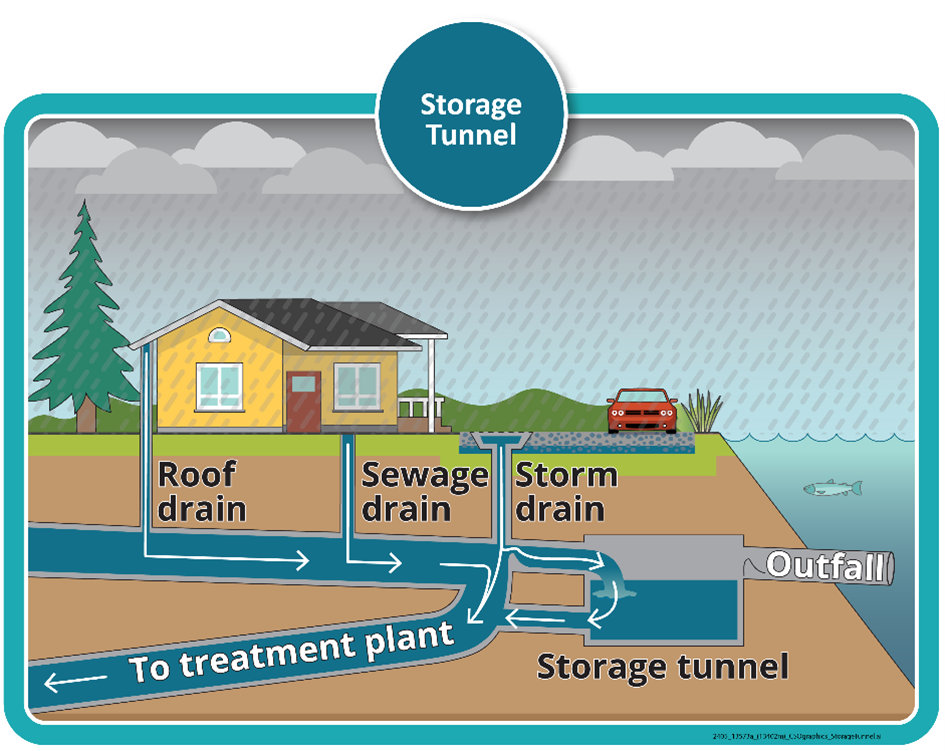South Park wastewater backup protection
King County is working on short-term and long-term solutions to reduce the risk of wastewater backups in South Park.
Project description
Reducing wastewater backups and planning for climate change
King County Wastewater Treatment Division (WTD) is continuing work to reduce the risk of wastewater backups in South Park as climate change brings weather extremes to the Pacific Northwest. We are using current scientific knowledge to prepare our wastewater system for bigger storms, rising sea levels, and higher tides in South Park. We are also collaborating with Seattle Public Utilities (SPU) to protect water quality, public health, and the environment.
In 2023 and 2024, King County WTD staff developed a list of options for reducing the risk of wastewater backups as the climate changes. A team of WTD technical experts worked with a technical consulting firm to evaluate the options during multiple workshops, including participation and input from Seattle Public Utilities (SPU). After a thorough process we have identified the option that best meets the criteria we set for a future project in the area. The option proposes to create separate pipes for stormwater and wastewater and to reroute parts of the wastewater systems.
Many details are being worked out before the proposed project can be designed, such as coordination with the City of Seattle, budgeting, and permitting. The design phase could start in 2026 at the earliest. We will update you when the project is ready to begin design.
Project update
Summer 2025
Team recommends Flow Rerouting with Wastewater and Stormwater Separation for future project to reduce the risk of wastewater backups in South Park
After gathering data, developing, and reviewing options, King County recommends separating the current combined stormwater and wastewater pipe into two pipes and rerouting flows. The goal of these actions is to provide protection against backflows for the homes on streets in areas affected by wastewater backups in South Park.
Note, a project to separate pipes and reroute flows will address wastewater backups. Even with these changes, river flooding exacerbated by climate-driven sea level rise could still overwhelm the sewer system. The City of Seattle, in partnership with Duwamish Valley residents and businesses, King County, and many other stakeholders in the public, philanthropic, academic, and private sectors, is leading work to develop a holistic sea level rise adaptation strategy, including physical infrastructure investments to protect Duwamish Valley communities from river flooding.
If you are experience flooding or sewer backups, please call the SPU 24/7 Operations Response Center at (206) 386-1800. SPU will coordinate with King County WTD on wastewater issues. For emergencies, always call 9-1-1.
Wastewater backup protection options
(developed and evaluated in 2023 and 2024)
The team refined and agreed on options based on the criteria below.
To be considered, an option had to:
- Reduce likelihood of wastewater backups for decades
- Maintain 8th Ave Regulator Station Combined Sewer Overflow (CSO) compliance with state standards
- Account for future sea level rise and precipitation
- Be compatible with potential City of Seattle or SPU long-term projects
Backflow preventers (e.g. grinder pumps) continue to be an important tool to help reduce the risk of wastewater backups in homes and businesses as we plan for the future. They have been installed in 24 homes in the area and may be installed in additional homes if needed.
Selected Option 1: Wastewater and stormwater separation and flow rerouting
Install separate wastewater and stormwater pipes under roadways where currently there are combined pipes and reroute flows to 7th Ave. This option:
- Keeps stormwater out of the wastewater system so there is more space for wastewater
- Sends stormwater to local system for treatment (not pictured in drawing)
- Protects homes on streets where separation is completed from wastewater backups for many decades
Note: Drawing does not show connection to local stormwater system

Option 2: Retrofit 8th Ave Regulator Station
Add pumps to counteract high tides and screening and/or primary treatment for overflows. This option:
- Allows the system to discharge combined stormwater and wastewater through the outfall during extremely high tides
- Only used when the system is full
- Screening or primary treatment will reduce pollution from the outfall
- Protects the neighborhood from wastewater backups for many decades
Note: Drawing does not show retrofits.

Option 3: Storage tunnel
Build an underground storage tunnel to hold excess flows and carry them to the Georgetown Wet Weather Treatment Station. This option:
- Adds space in the system for stormwater and wastewater
- Collects and holds flows until after the storm has passed
- Protects the neighborhood from wastewater backups for many decades
Note: This drawing shows the concept, not the final design.

Option 4: Storage tank
Build an underground storage tank to hold excess flows until there is room in the pipe system to carry them to West Point Treatment Plant. This option:
- Adds space in the system for stormwater and wastewater
- Collects and holds flows until after the storm has passed
- Protects the neighborhood from wastewater backups for a couple decades with lessening protection beyond that time
Note: This drawing shows the concept, not the final design.

Option 5: Elevate homes
Physically elevate individual homes with low wastewater connections to raise the elevation of their connections. This option:
- Raises the level of private pipes that are at a lower level than city or county pipes
- Allows wastewater to flow from the house reducing the risk of backups from a full system
- Does not require changes to the regional wastewater system as work occurs on private property
- Protects the individual elevated homes from wastewater backups for many decades
- All at risk homes must be raised for this to be a viable option.
Narrowing down the options: criteria and evaluation
The team developed the criteria listed below to evaluate the benefits and risks based on what we know today. We gave the criteria weights to help prioritize and compare the many factors involved. For example, long-term considerations, such as community benefits, counted more than short-term considerations such as project delivery.
Community benefit
- Provides green space, recreational space, or access to the river
- Provides cleaner air, water, and soil
- Reduces CSO frequency
- Reduces urban flooding
Short-term impacts
- Construction impacts such as noise, traffic, etc.
- Relocates or potentially displaces residents
- Duration of construction impacts
Adaptability
- Flexibility to alter the project if climate science or regulations change
- Ability to expand or change within existing property or easement agreements
Project delivery
- Can be permitted relatively easily
- Needs new property or easements
- Uses low risk construction methods
Operations and maintenance impacts
- Needs additional staff expertise
- Extra staff needed
- Uses familiar technology
Additional factors: The team also considered total project cost, operations cost, and other things that may affect the project’s success in preventing wastewater backups.
 Translate
Translate